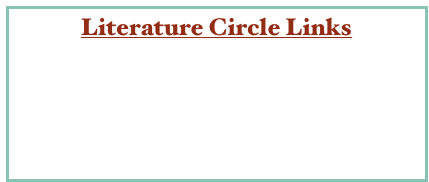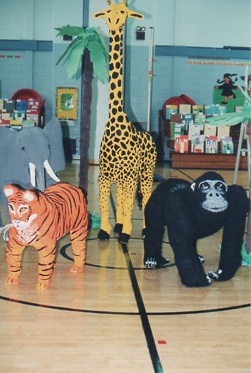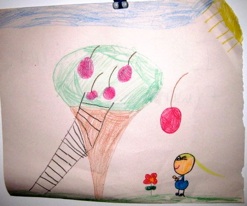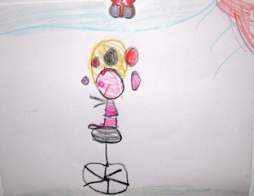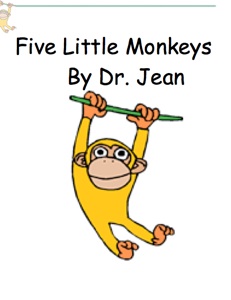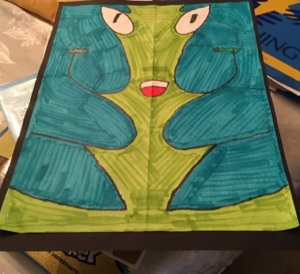The following is a doc site; a link is not available. It contains great ideas to use in lieu of workbooks and worksheets. The author’s name is not available. If you know the author, let me know so that I can give the author credit.
“There are many, many ways for children to respond to what they read. Below is a collection of activities I have used over the years in place of the traditional workbooks and worksheets.
READING RESPONSE ACTIVITES
1. Beach Ball - Using a marker write the story elements on different sections of the beach ball. (characters, setting, problem, solution, beginning, middle, end, etc.) Throw the beach ball to someone, when they catch it, they look where their thumb landed – they tell us that part of the story. from Classrooms That Work
2. Pizza Pie – Divide a large poster board circle into 8 – 12 sections. On each section, write a story element. On the front, draw pizza toppings. Working in groups, they choose a slice of pizza and are responsible to tell us that part of the story during the discussion time.
3. Quartering the Story – Each child divides a sheet of drawing paper into 4 sections.
Section 1 = draw a picture of a scene from the story
Section 2 = write any new words and the meaning
Section 3 = do a character sketch of a character
Section 4 = summarize the story in a few sentences
From Deb, second grade, on the Mailring
4. Story Maps
-
5.Story Wheels - (best for novels) go to
-
6.6. Novel Grid – Give children a large (12x18) sheet of paper. Fold or divide the paper into 8-]
12 sections. At the top of each square in small letters, write a different story element, include
some word work. Children read a novel independently or with a partner and fill in the squares as they read. The teacher initials the square when completed. Make a grid on the chalkboard for kids to copy onto a large (18x12) sheet of paper. In each square write a story element. Leave enough room for the student response in each square. Teacher initials the square as the student completes each one. Students do this work independently. Teacher still does a mini lesson each day. Things from the following list can be used in the grid.
*major/minor characters,
*time and place of setting
*plot
*problem
*resolution
*cause/effect examples
*metaphors/similes
*summarize beginning
*summarize middle
*summarize end
*new words and meaning
*point of view
*author’s purpose or theme of story
*character sketch ofノ
*feelings after ch. 3, ch. 6, ch. 9 etc.
*idioms – She gave him a hand. She was as mad as an old wet hen
7. Summary and Opinion Sheets – Similar to double entry journals
8. Sequence Charts – Have a group draw the important events from the story and glue them onto a sheet of large chart paper in correct order. ( A form of a graphic organizer)
9. Graphic Organizers
Story frame
Story map
Sequence Chart
Character web
Compare/contrast chart
Venn diagram
Cause/effect chain
Predict-o-gram
KWL
Prediction chart
Novel grid
Knowledge Chart
10. Double Entry Journals - First entry – summarize the story using the story elements
Second entry – write your opinion of the story and/or
connections (good for novels)
11. OWLS – Sit in a circle or writeノ from Deb Smith on the Four Block Mail Ring
O – observe = What did you observe about this story?
W – wonder = What do you wonder about as you read this story?
L – link = How can you link this story to your own life?
S – sense = What senses were aroused when you read this book? Smell, sight, hearing,
feeling, tasting
14. Say Something – Begin reading a story with your partner, at the bottom of each page
say something about what you just read. Your partner confirms is it is a correct statement.
15. L/RT – (Classrooms That Work, p. 69) Listening/Reading Transfer – Teacher begins reading and telling class to listen how to a apply a certain reading strategy while they listen. Teacher shows how she applies the strategy by stopping at certain appropriate places to think aloud. She them tells the students to do exactly what she did while they listened. Students begin reading a story and transfer the strategy to their own reading. Teacher checks for transfer through questions. Goal is to get them to think while they read.
16. Write a Found Poem - Students make a list of beautiful descriptive phrases or similes from a story
17. Write a Place Poem – good for setting
Color words that describe things you would see in the place or story Ex: pink pigs
Sounds you would hear in the story or place Ex: oinking pigs, gates shutting
Smells you would smell in the story or place Ex: dirty pigs, sweaty people
Feelings you would experience if you were a character in the story at that place
excitement, disappointed, grossed out
18. Write 3 surface questions and 2 under the surface questions and answer them or answer them in a group setting. (Literal and inferring.) Use the 4 different kinds of questions also.
1. Right there
2. Think and search
3. Author and you
4. On your own
19. Write one sentence that summarizes the story and draw a picture of it.
20. This book reminds me of ノ. Connect to personal experience
21. Discuss the lead in the story – how did the author bring the reader into the story?
Flashback? Foreshadowing? Starting in the middle?
22. Ending – How did the author leave the reader? Was the ending satisfying?
23. Story Journals – good for chapter books
Summarize chapter
Make predictions
Relate to story – make a connection
“I wonder” statement
Opinion “I like the partノ” “I didn’t like the partノ”
24. 30 – 20 – 10 - As children read, give a signal for them to freezeノbegin 30 second retelling/then next person continues the story for 30 seconds – repeat a 20 and a 10
25. Ask question days - Partners read and stop after each page – The reader asks the listener a question. This must be answered. Both students confirm if it is correct.
26. Self-questioning – Stop after each page and ask yourself “Did I understand what I just read? If the answer is no, then reread.
27. Imagery
Have the student draw the image that is in their head after reading a passage.
Then write a brief response on how drawing the picture helped with their understanding the story.
28. Questioning (after mini lessons on questions) from Mosaic of Thought
Have students read the story. Stop after each page to record any questions the story made them wonder about. Continue reading the story, answering in their head any questions. Formulate more questions as they continue reading. When story is completed, have the students write a brief response telling how the questions helped with their understanding the story. (questions about the plot, about the author, no answers) Discuss the different kinds of questions.
28. Celebrations
Make a mobile showing the characters. Write character traits on back.
Make a story board showing a important scenes from the story.
Make a diorama
Reading parties or picnics
29. Draw It/Act It Strategies (Classrooms That Work, p. 71) Develops visualization skills – mental pictures. This is a necessary step in showing children how to “get into” a story. Helps in higher levels of thinking. Such as – experiencing the mood, predicting, hypothesizing about character motive, future action of story, identifying with a character, inferring strategies.
30. Draw Something – (Classrooms That Work, p. 73) Have them draw something that is
not pictured.
31. Do a Play – Use one already written or have children create the script. Repeated
readings is very powerful way to help children develop fluency.
32. Act Out a Story (p.74, Classrooms That Work) – Children act it out or they make simple stick puppets.
33. Make a Scene (p. 75, Classrooms That Work) - Select a scene and transform it into a
script, briefly rehearse, then present it.
34. The Oprah Winfrey Strategy (p. 75, Classrooms That Work) Teacher assigns
character roles to children. Now invite them on your show and interview them. Have
chairs set up to look like a TV stage. Begin with broad questions, “Tell me a bit about yourself.” “What seemed to be the problem.” Move to other characters and ask, “Do you agree with her?” “





